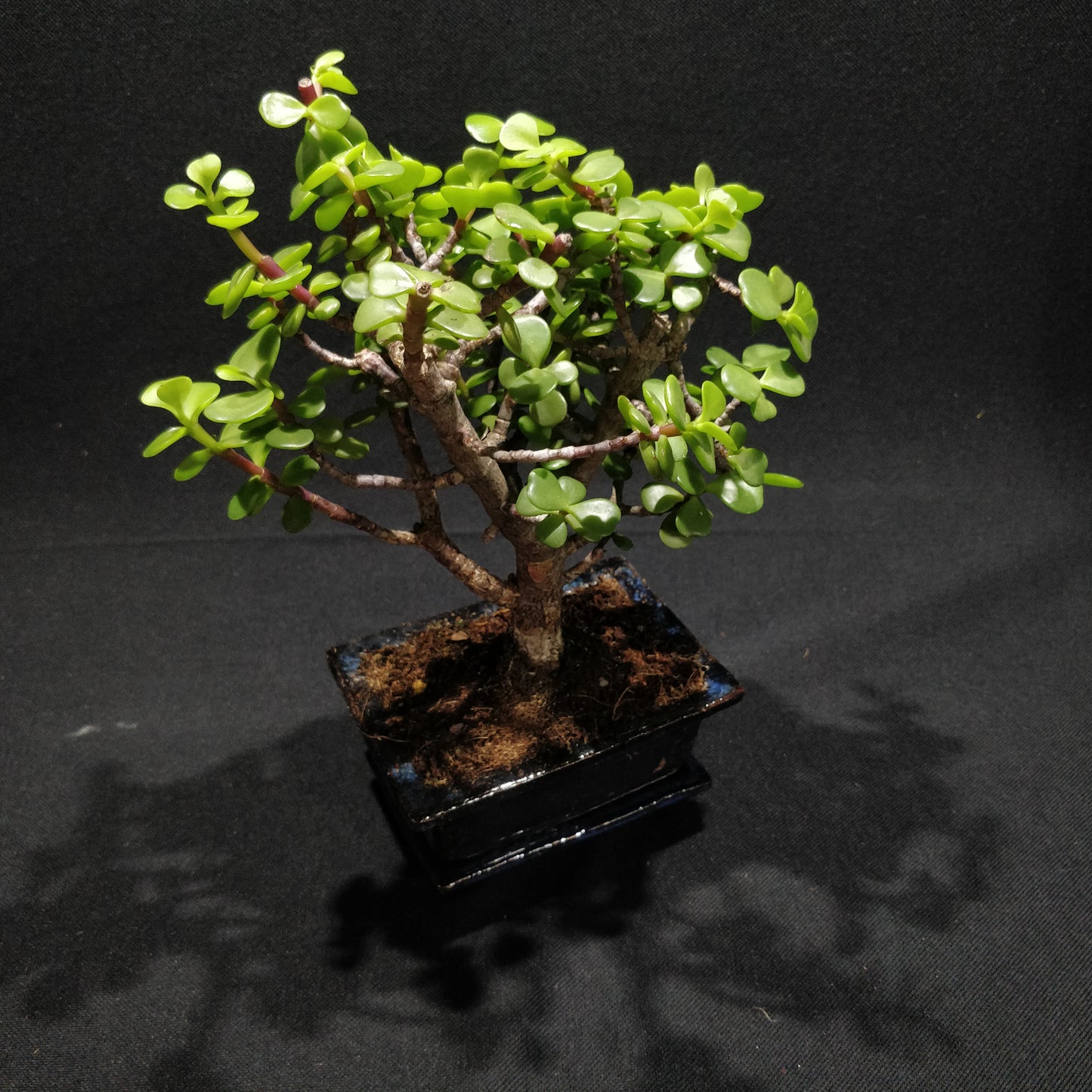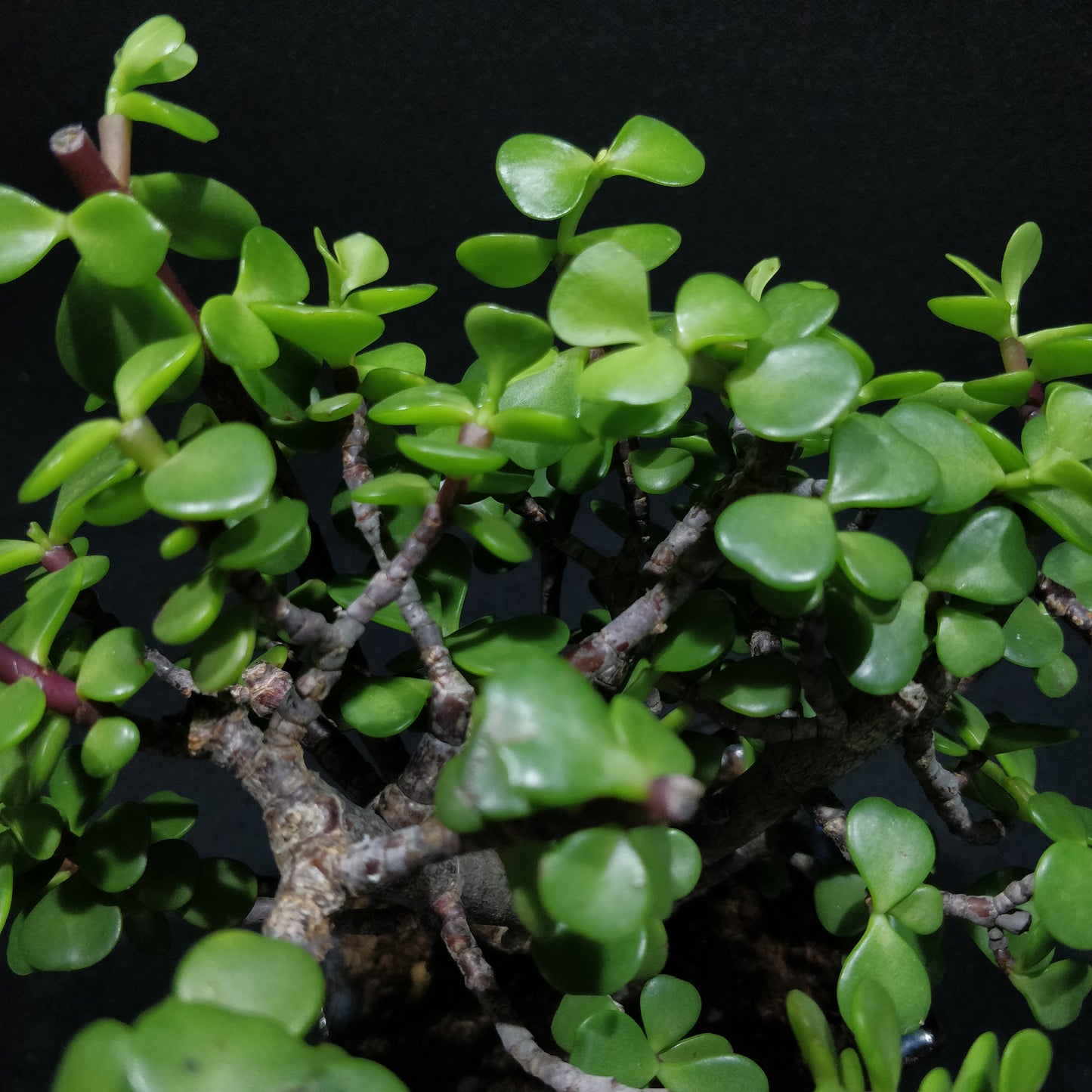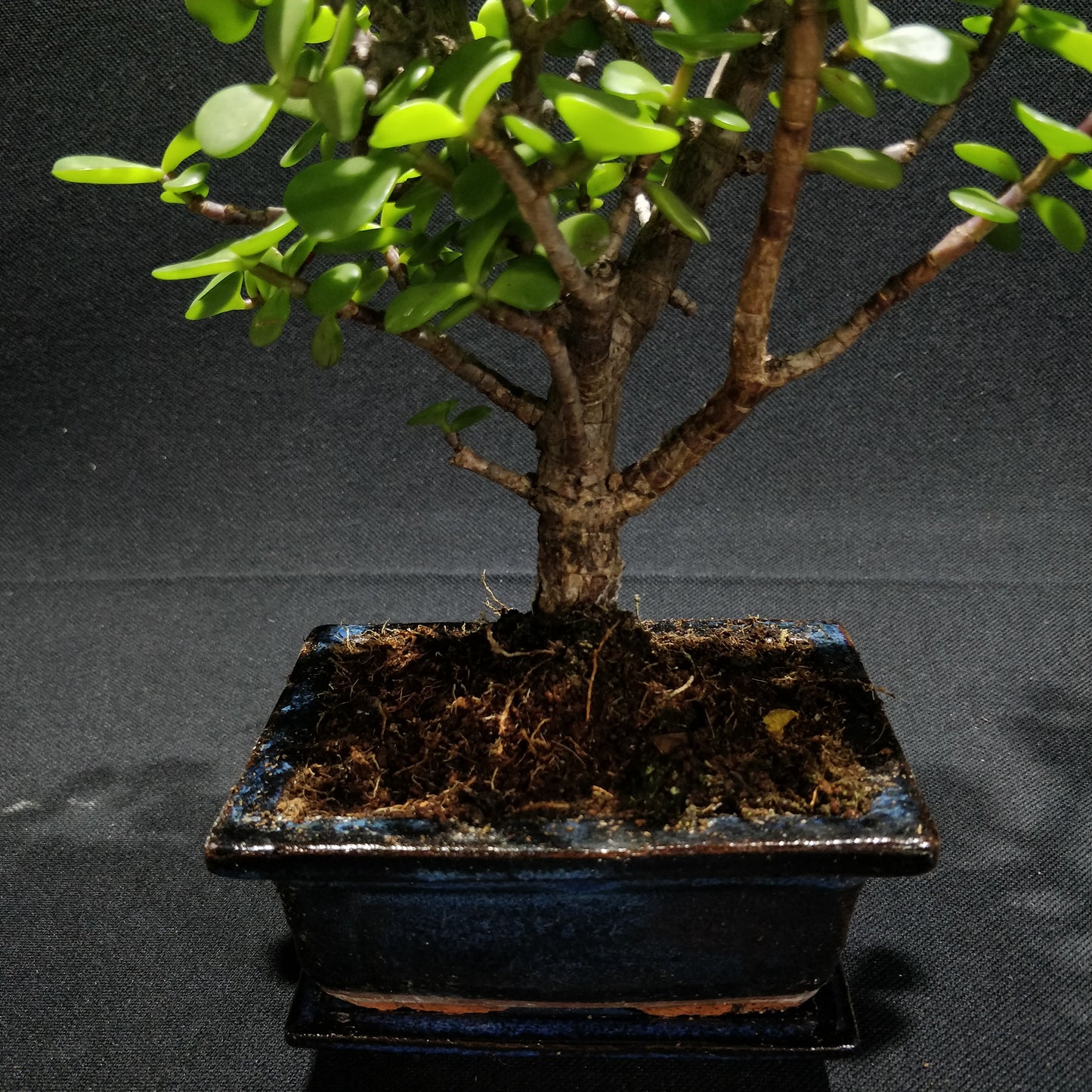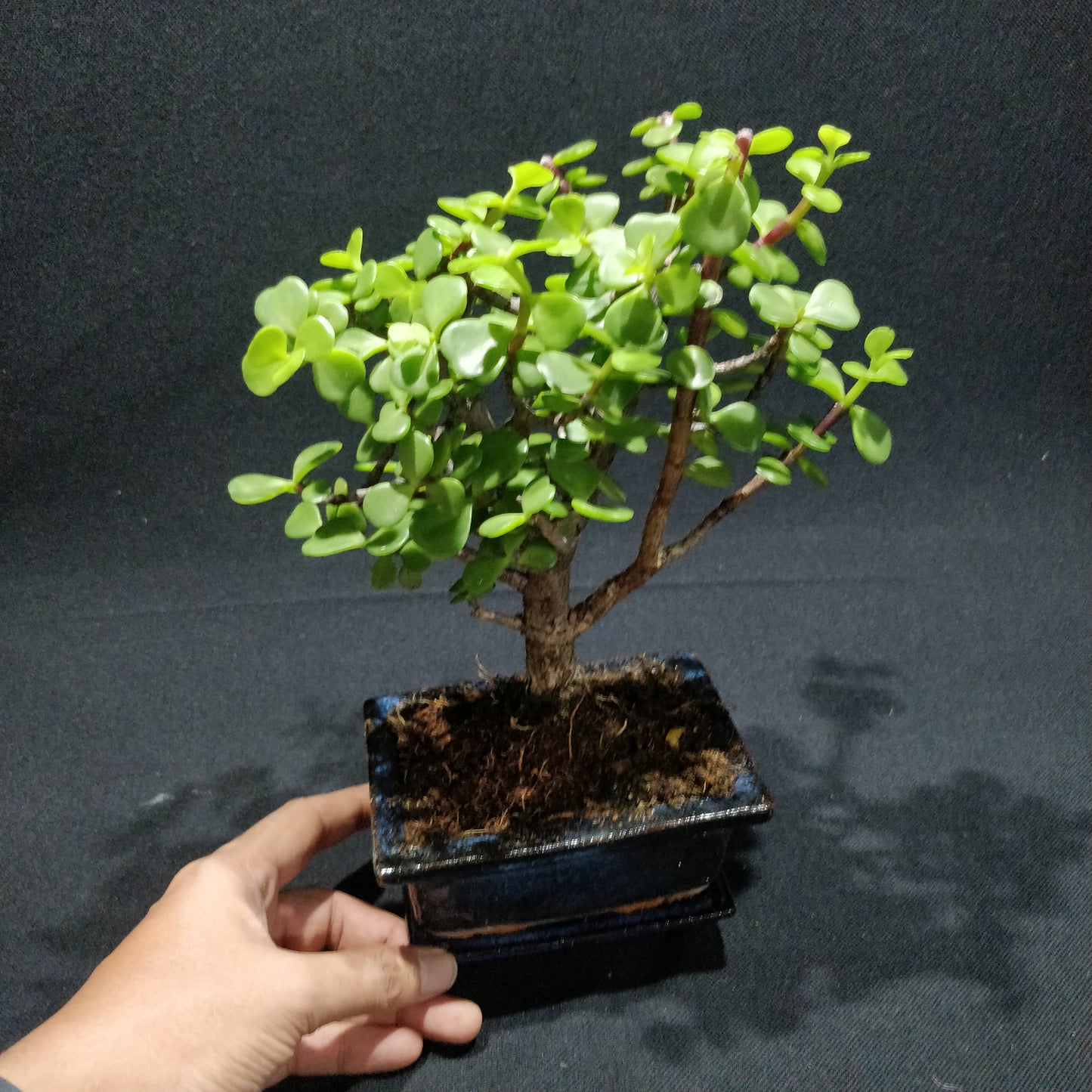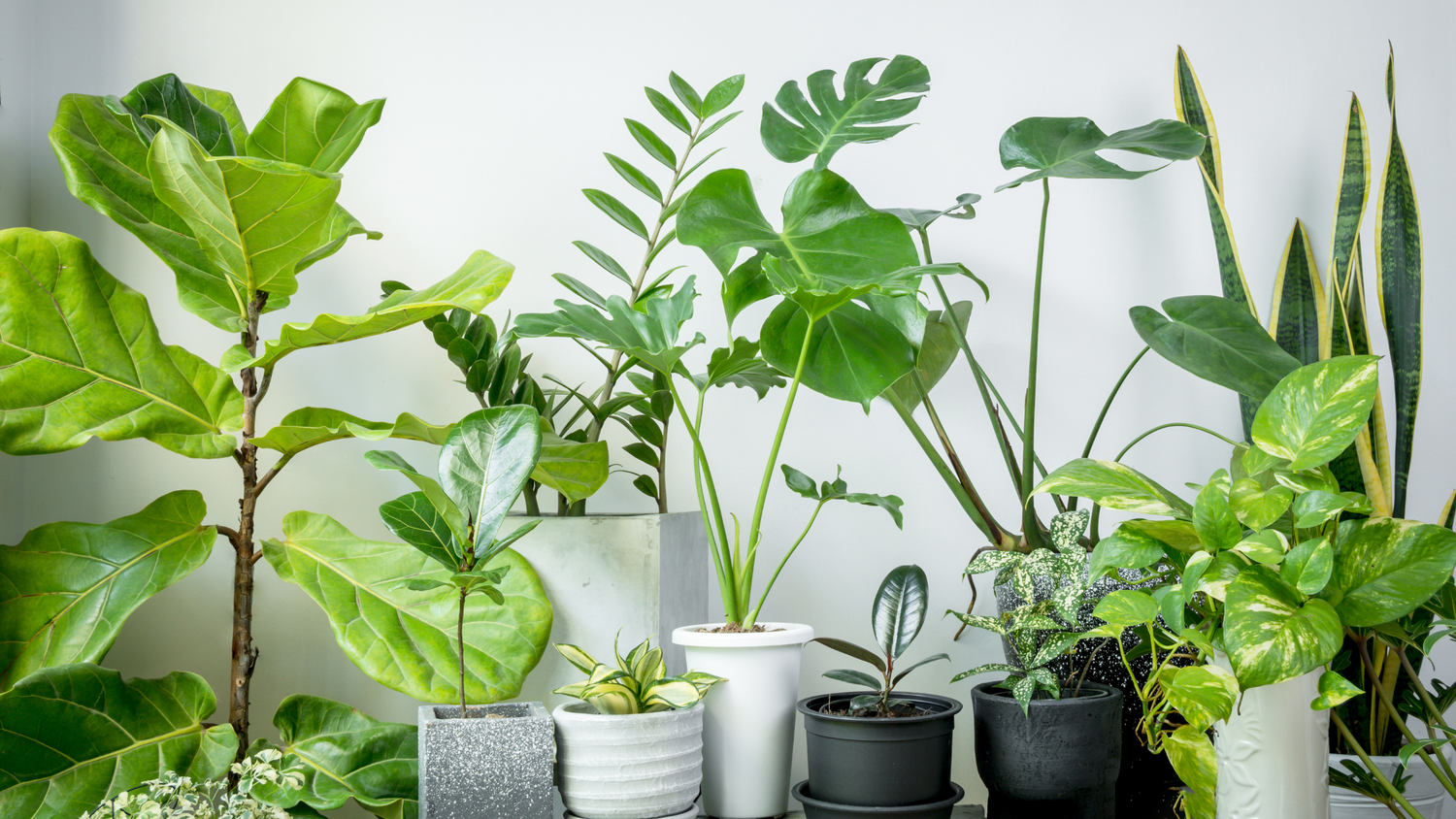Jade Bonsai - Crassula Ovata
Jade Bonsai - Crassula Ovata
Out of stock
Couldn't load pickup availability
The Jade Bonsai, also known as the Crassula ovata Bonsai, is a popular indoor plant that is prized for its thick, glossy leaves and its ability to be shaped into a variety of bonsai styles. The Jade Bonsai is a slow-growing plant, but it can reach up to 1 meter tall and wide indoors. It produces small, white flowers in the spring, but they are not very showy.
Care instructions:
- Light: The Jade Bonsai needs bright, indirect light. Avoid placing the plant in direct sunlight, as this can scorch the leaves.
- Water: The Jade Bonsai is a succulent plant and does not need to be watered often. Allow the soil to dry out completely between waterings. Be careful not to overwater, as this can lead to root rot.
- Temperature: The Jade Bonsai prefers warm temperatures between 18 and 25 degrees Celsius. It can tolerate cooler temperatures, but it may go dormant if the temperature drops below 10 degrees Celsius.
- Soil: The Jade Bonsai prefers a well-draining potting mix. You can use a commercial cactus and succulent potting mix or make your own by mixing equal parts potting soil, perlite, and sand.
- Fertilizer: The Jade Bonsai does not need to be fertilized often. Fertilize once a month during the spring and summer months with a balanced liquid fertilizer. Do not fertilize during the fall and winter months.
Pruning and training:
The Jade Bonsai can be pruned and trained to create a variety of shapes and styles. Pruning should be done in the spring or summer, when the plant is actively growing. To prune the Jade Bonsai, simply use sharp shears or scissors to trim the branches to the desired length. You can also use wire to train the branches into the desired shape.
Troubleshooting:
- Yellowing leaves: Yellowing leaves can be a sign of overwatering, underwatering, or too much direct sunlight. Check the soil moisture and move the plant to a different location if necessary.
- Drooping leaves: Drooping leaves can be a sign of underwatering or root rot. If the soil is dry, water the plant thoroughly. If the soil is wet, it is likely that the plant has root rot. Remove the plant from its pot and trim away any dead or dying roots. Replant the plant in fresh potting mix.
- Pests and diseases: The Jade Bonsai is relatively resistant to pests and diseases. However, it is important to inspect your plant regularly for any signs of pests or diseases. If you see any pests, treat them immediately with an insecticidal soap or neem oil spray.
Tips:
- The Jade Bonsai is a relatively low-maintenance plant, but it does require some care to thrive. Be sure to water the plant regularly, but don't overwater. Fertilize the plant once a month during the spring and summer months, and prune and train the plant as needed.
- The Jade Bonsai is a beautiful and unique plant that can add a touch of elegance to any home or office. With proper care, your Jade Bonsai can thrive for many years to come.
Scientific Classification
Scientific Classification
Order: Saxifragales
Family: Crassulaceae
Genus: Crassula
